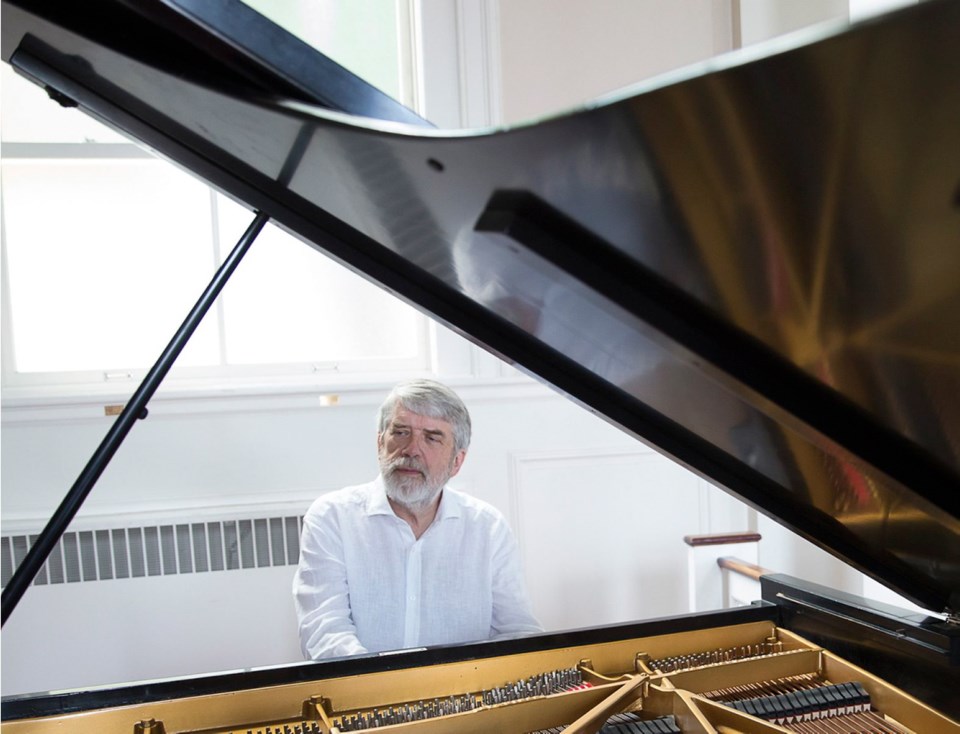Pianist Bruce Vogt, a longtime professor in the University of Victoria’s School of Music, has covered a wide range of repertoire in his recent solo faculty concerts at UVic — Haydn, Mozart, Beethoven, Schubert, Liszt, Debussy — and he will expand that repertoire still further in his recital on Friday March 15 (8 p.m., Phillip T. Young Recital Hall, $25/$20/$10; online at livestream.com/somlive; finearts.uvic.ca/music/calendar).
His program opens with two nocturnes by Chopin though it is actually devoted mostly to Brahms, including the seven profound late pieces published as Op. 116 and the early Variations on a Theme by Robert Schumann, Op. 9.
Brahms wrote the variations in 1854, shortly after Schumann, his mentor and friend, had been institutionalized for mental illness, and the music is rife with allusions to Schumann and his wife Clara, to whom Brahms dedicated Op. 9. “Brahms clearly wrote this work as an elegy to Robert Schumann and as a gift of consolation to Clara,” says Vogt, who ranks Op. 9 “among his greatest achievements.”
In a talk preceding his performance, Vogt will discuss the variations in detail and address “the connection between the life of an artist and their art.”
•
On Saturday March 16, UVic’s Voice Ensemble, a group of singing students who attend a course in the School of Music, will mount Handel’s pastoral opera Acis and Galatea (8 p.m., Chapel of the New Jerusalem, Christ Church Cathedral, $20/$10; finearts.uvic.ca/music/calendar, christchurchcathedral.bc.ca).
Acis and Galatea, Handel’s first dramatic work in English, was composed in 1718 for Cannons, the estate at Edgware, just north of London, where he supplied music to an aristocratic patron. Based on a Greek myth drawn from Ovid’s Metamorphoses, the work offers a courtly idealization of rural life, focusing on the love between a nymph and a shepherd and the jealousy and conflict that result from the appearance of a monstrous rival.
The music is gorgeous, elegant, sensual, often emotionally powerful though also leavened with wit.
The instrumental ensemble will comprise members of the Victoria Baroque Players, and the musical direction is by Larry Beckwith, the Toronto-based tenor, violinist, conductor and teacher who, in 2003, founded Toronto Masque Theatre, which mounted Acis and Galatea several times. (It recently morphed into a new performance venture, Confluence.)
Saturday’s presentation is being “semi-staged” by the internationally celebrated local tenor Isaiah Bell, who has performed this work in the U.S. with the Mark Morris Dance Group and, just last month, with the San Francisco Chamber Orchestra.
Only about 150 seats are available for this show, so those interested in it should act promptly to secure a ticket.
•
On Sunday March 17, the Victoria Symphony’s music director, Christian Kluxen, will conduct an interesting Classics program that spans much of the 18th century but also dips a toe into the 20th (2:30 p.m., Farquhar Auditorium, UVic Centre, $35-$56; victoriasymphony.ca).
The concert will start with a bang — a dissonant chord comprising every note of a D-minor scale. For thus begins Jean-Féry Rebel’s Les élemens (1737), a programmatic suite, originally intended for a ballet, that was inspired by the four elements (earth, water, fire, air) and opens with a depiction of the chaos preceding Creation.
(By a curious coincidence, this rarity has been performed twice here in the past few years.)
Sunday’s program also includes a short symphony by Carl Philipp Emanuel Bach (1775) and Arvo Pärt’s Tabula rasa (1977), one of the first specimens of Pärt’s trademark “tintinnabular” style — slow, spare, contemplative music inspired by Medieval chant and polyphony and by the sound of bells, and often dubbed “holy minimalism” because of its evident spiritual aspirations. Tabula rasa is a two-movement concerto grosso for two violins, string orchestra and prepared piano, and will feature violinists Christi Meyers and Victoria Lindsay.
The program closes with Haydn’s splendid Symphony No. 96 (the “Miracle”). Haydn was a frequent highlight of the Classics programming under Tania Miller, who returned as a guest conductor last month to lead the “Oxford” Symphony (No. 92).
Kluxen, too, seems to have a way with Haydn, judging from his lively account he gave of the Symphony No. 82 (the “Bear”) in October 2016, just days before being named Miller’s successor.



